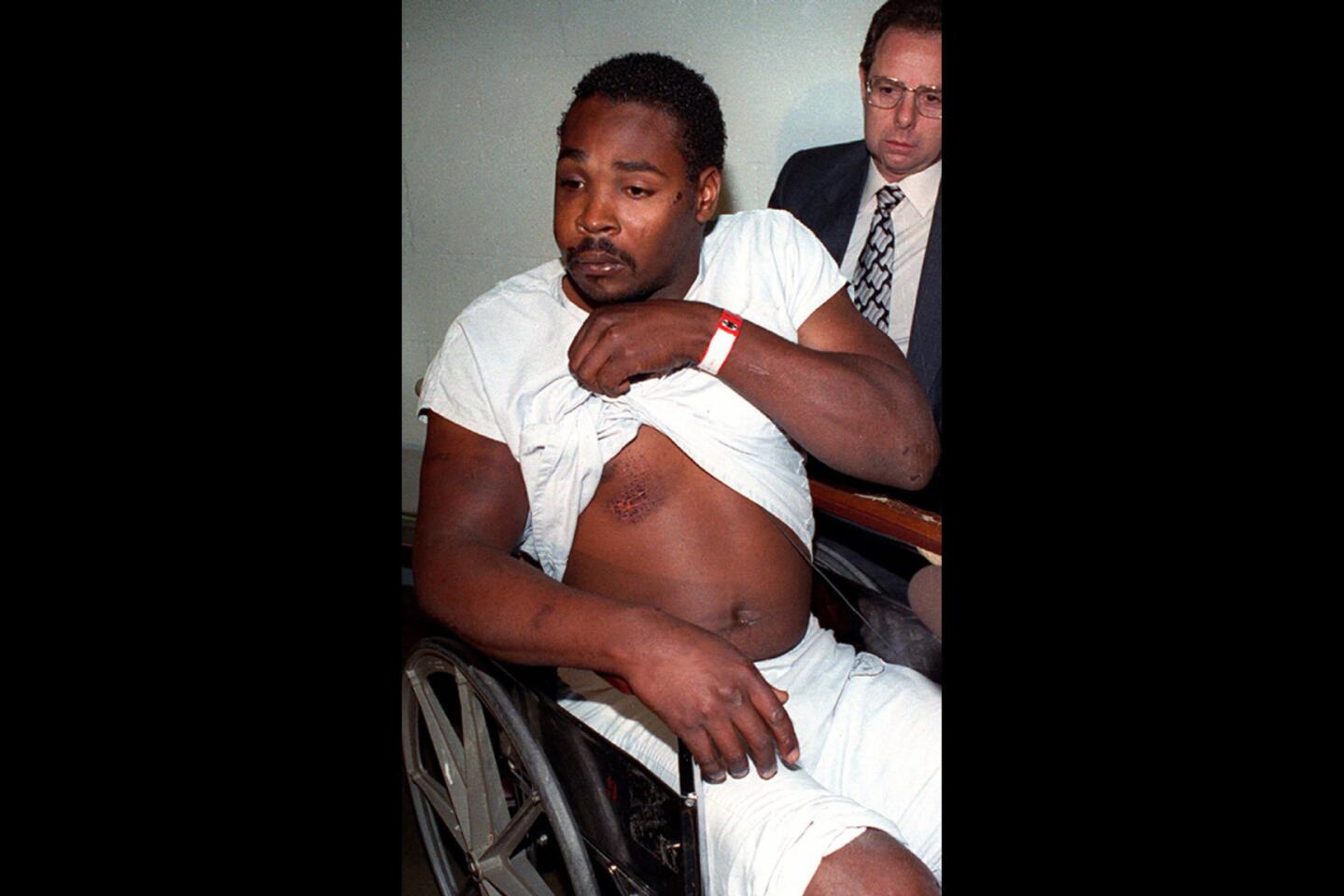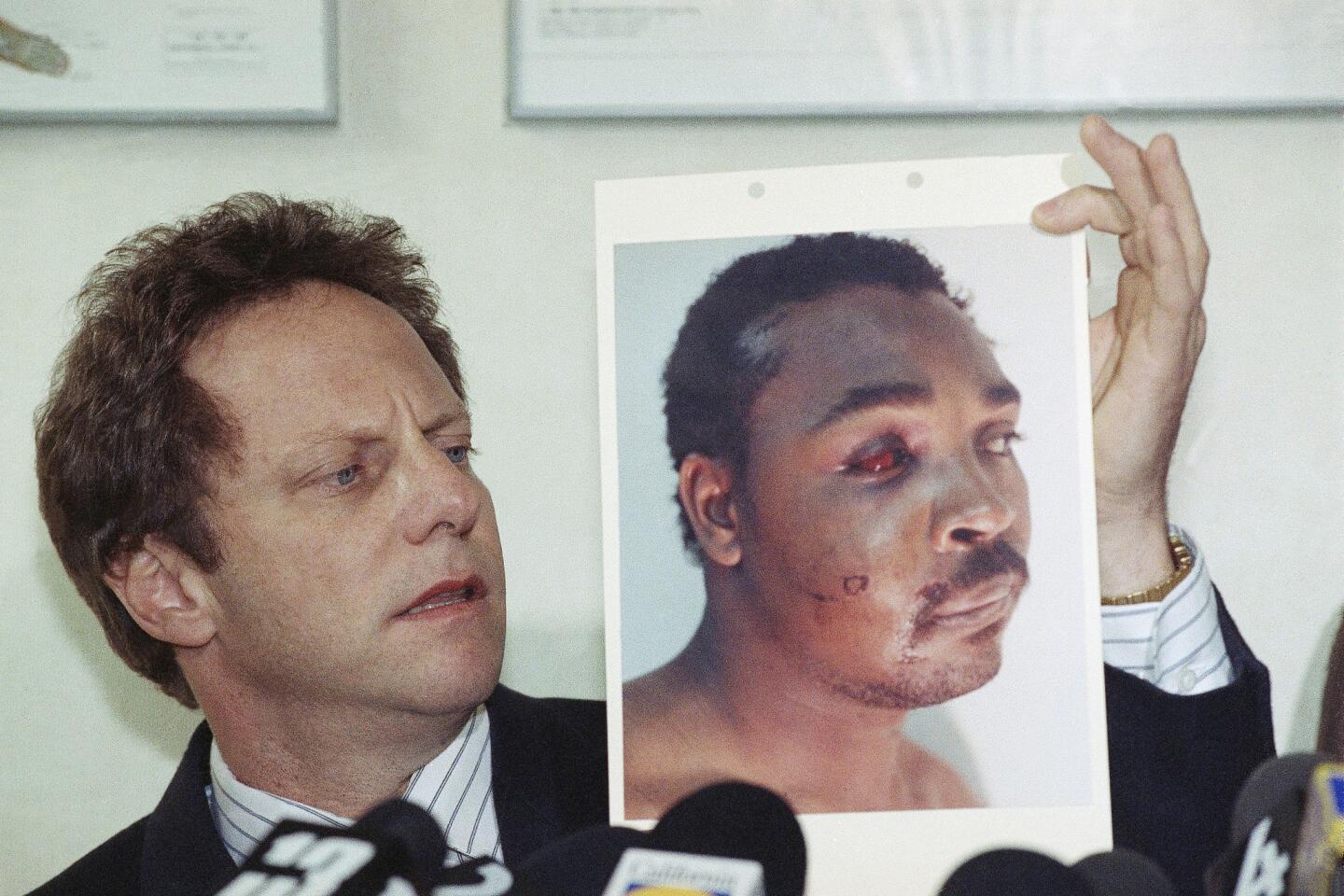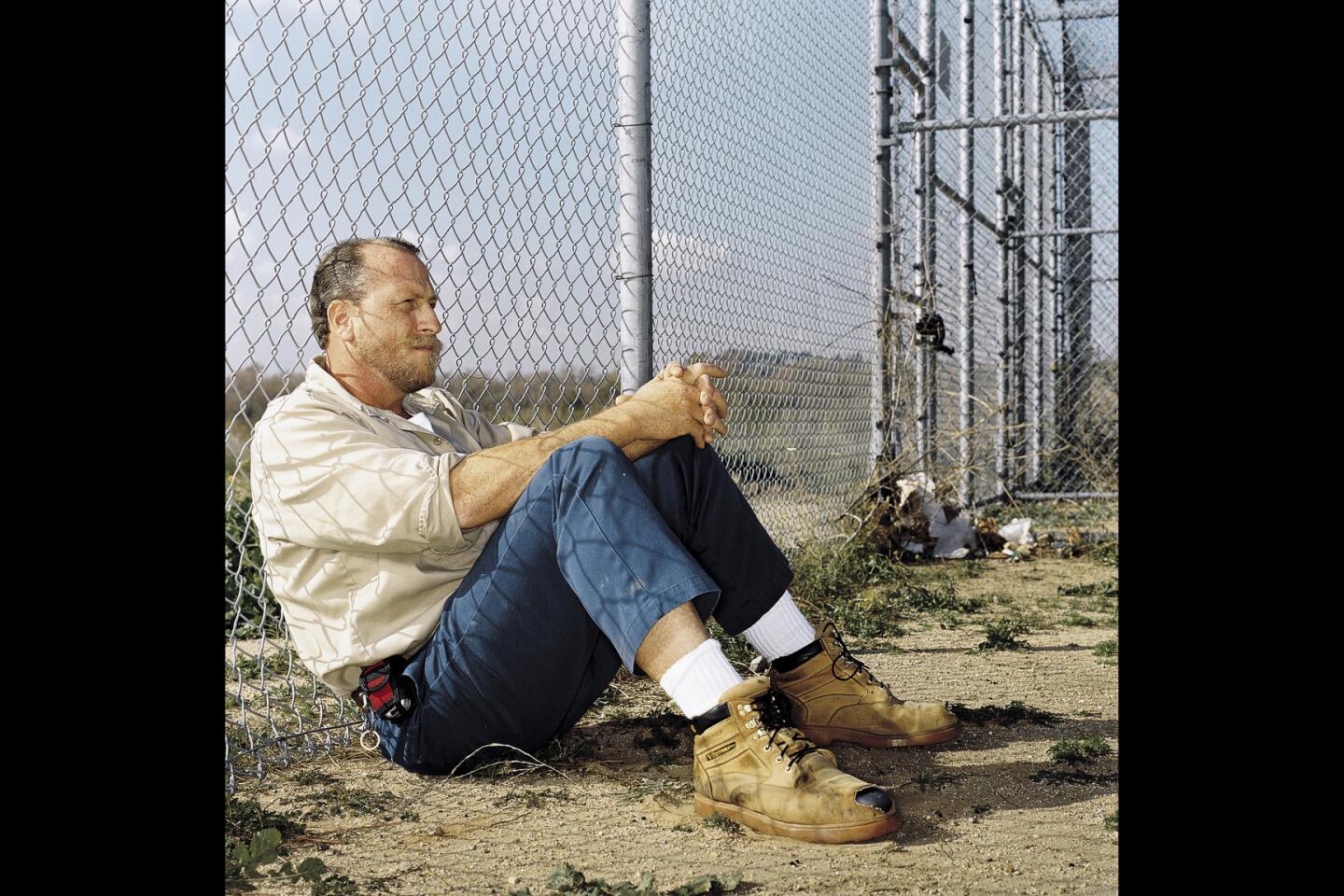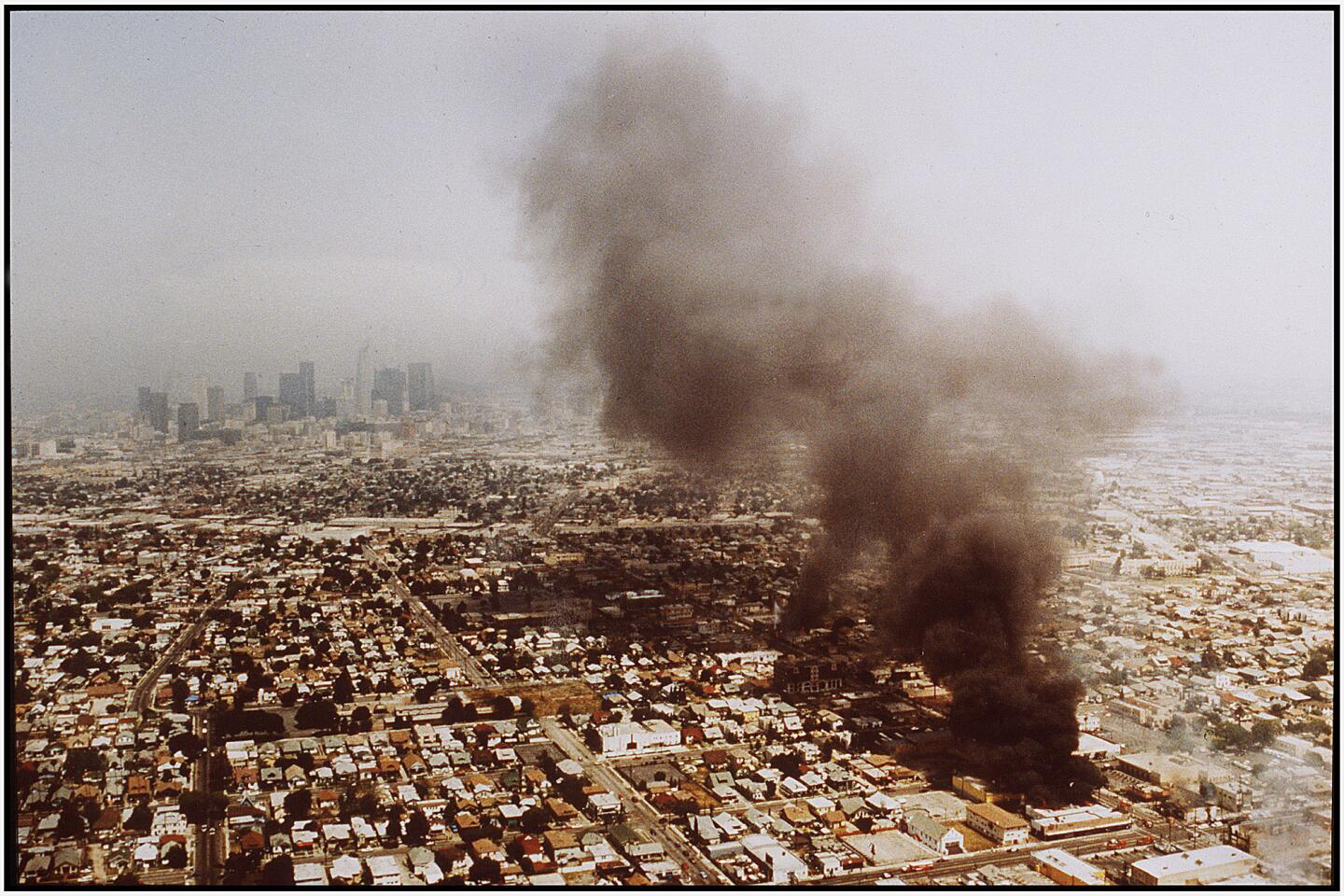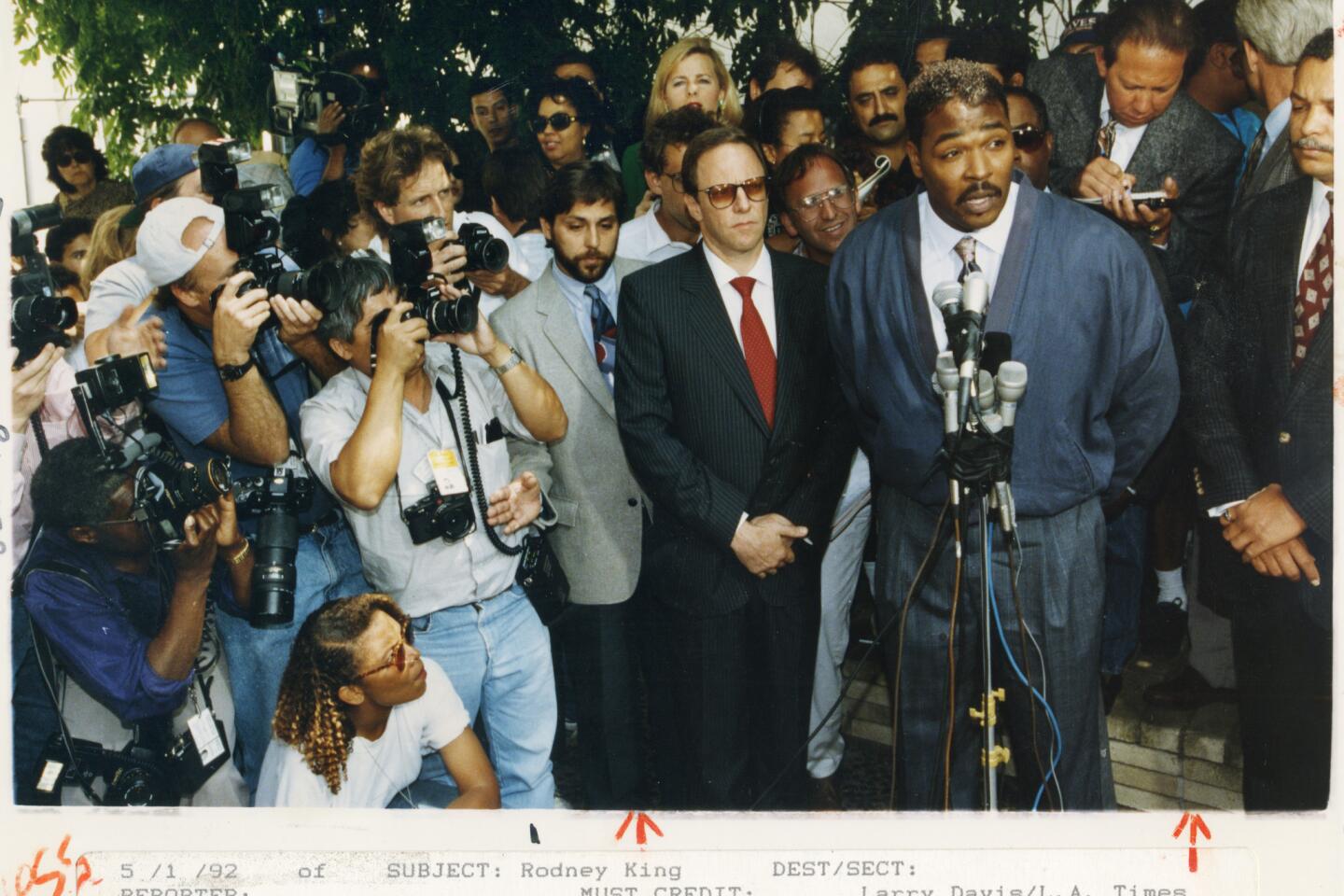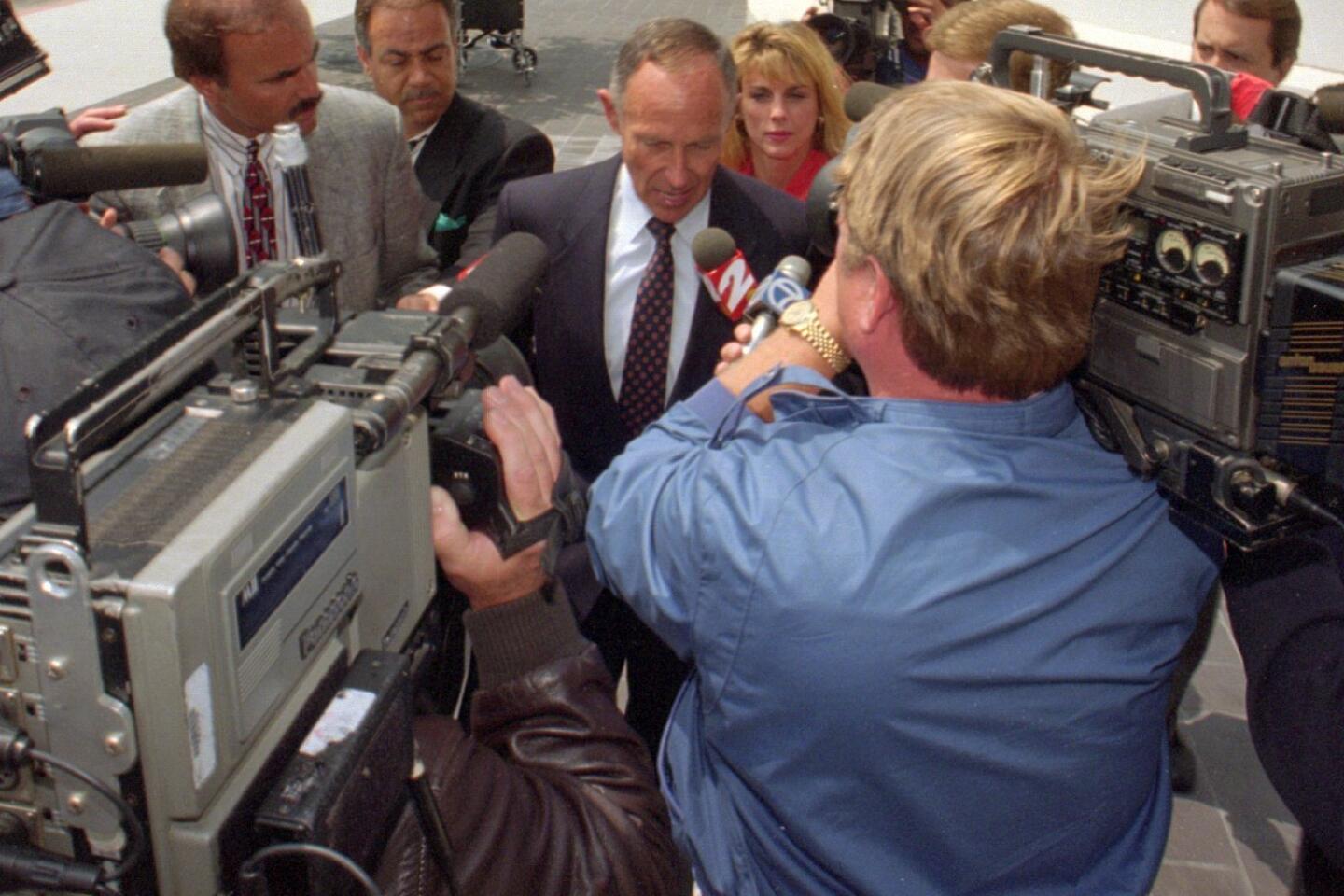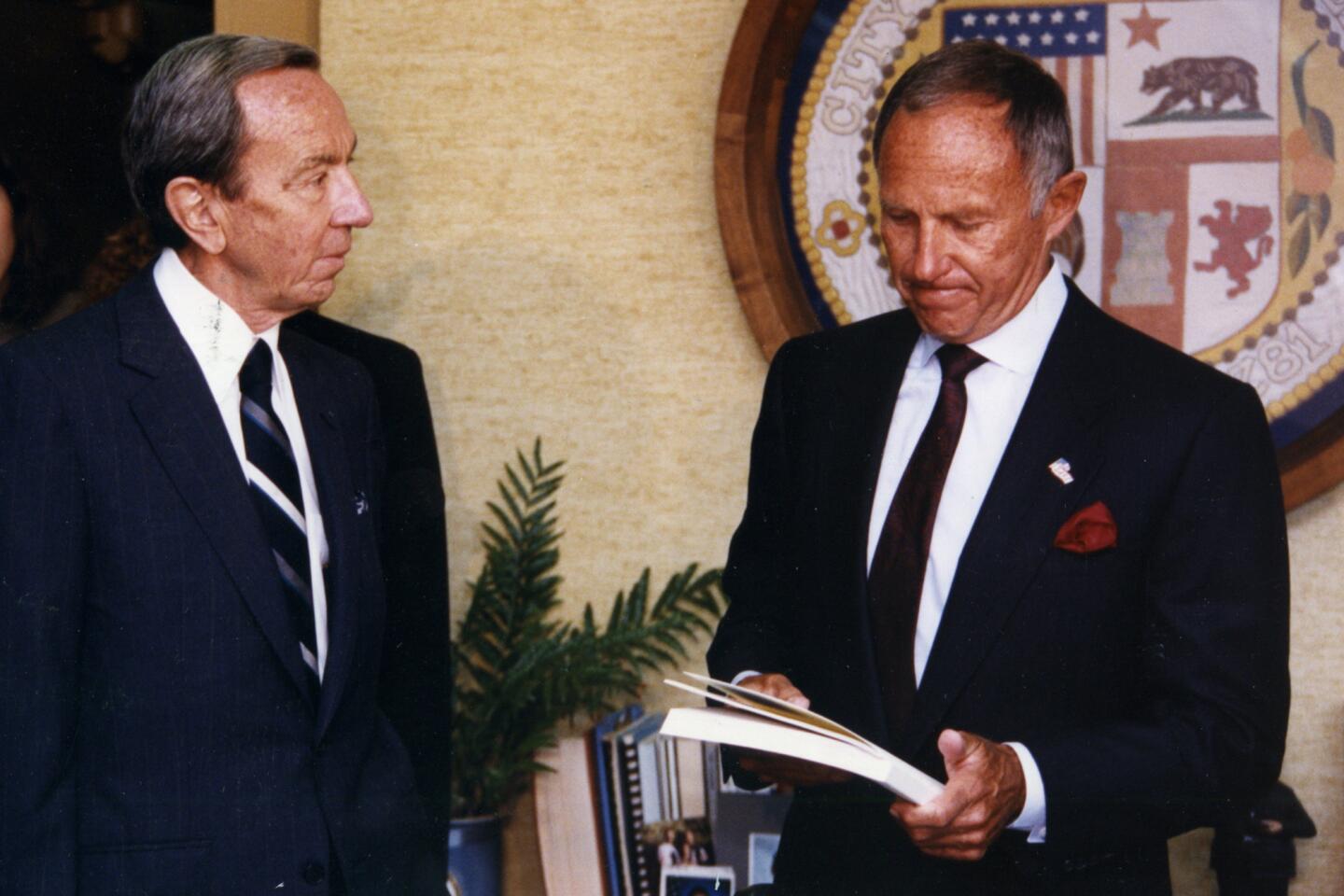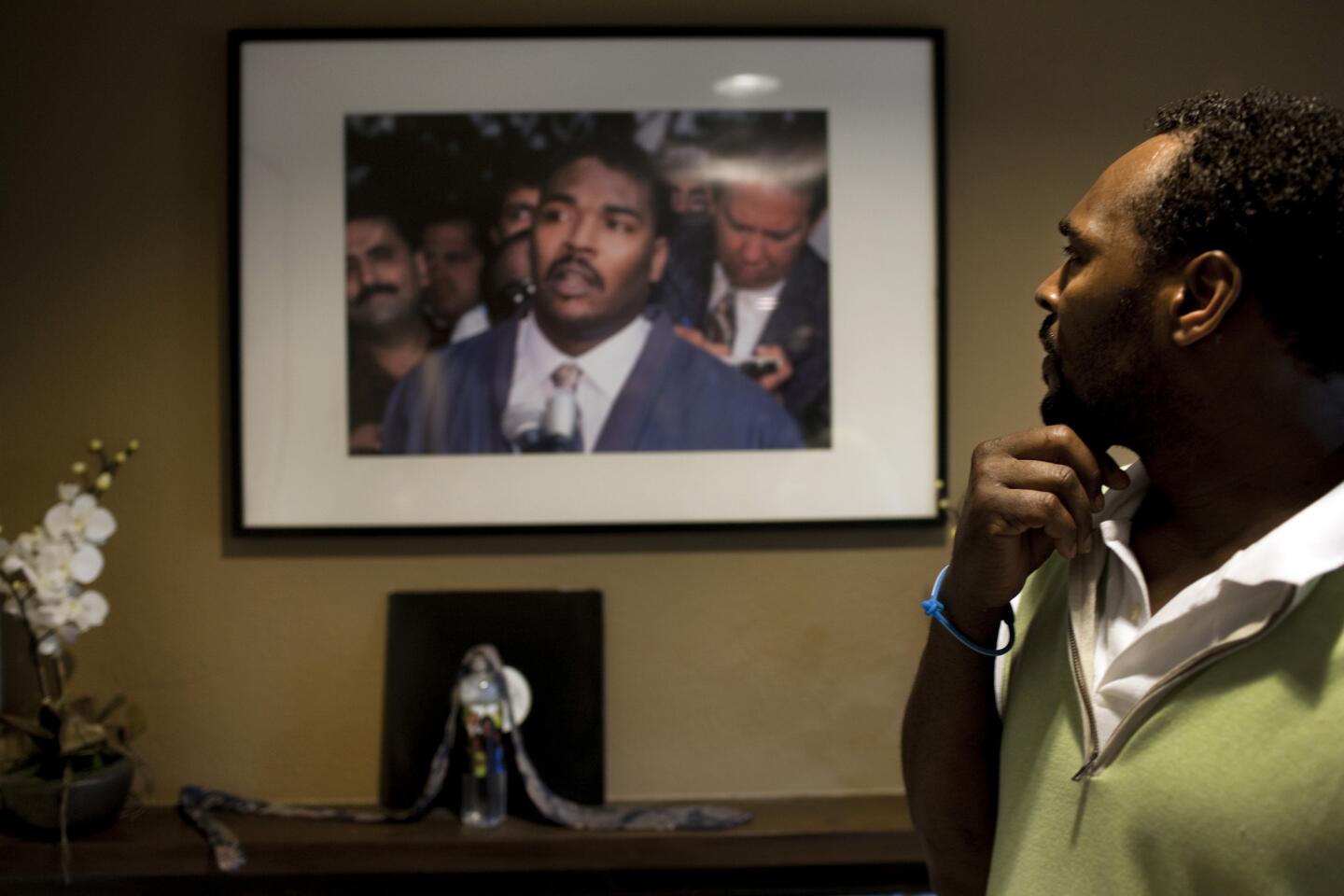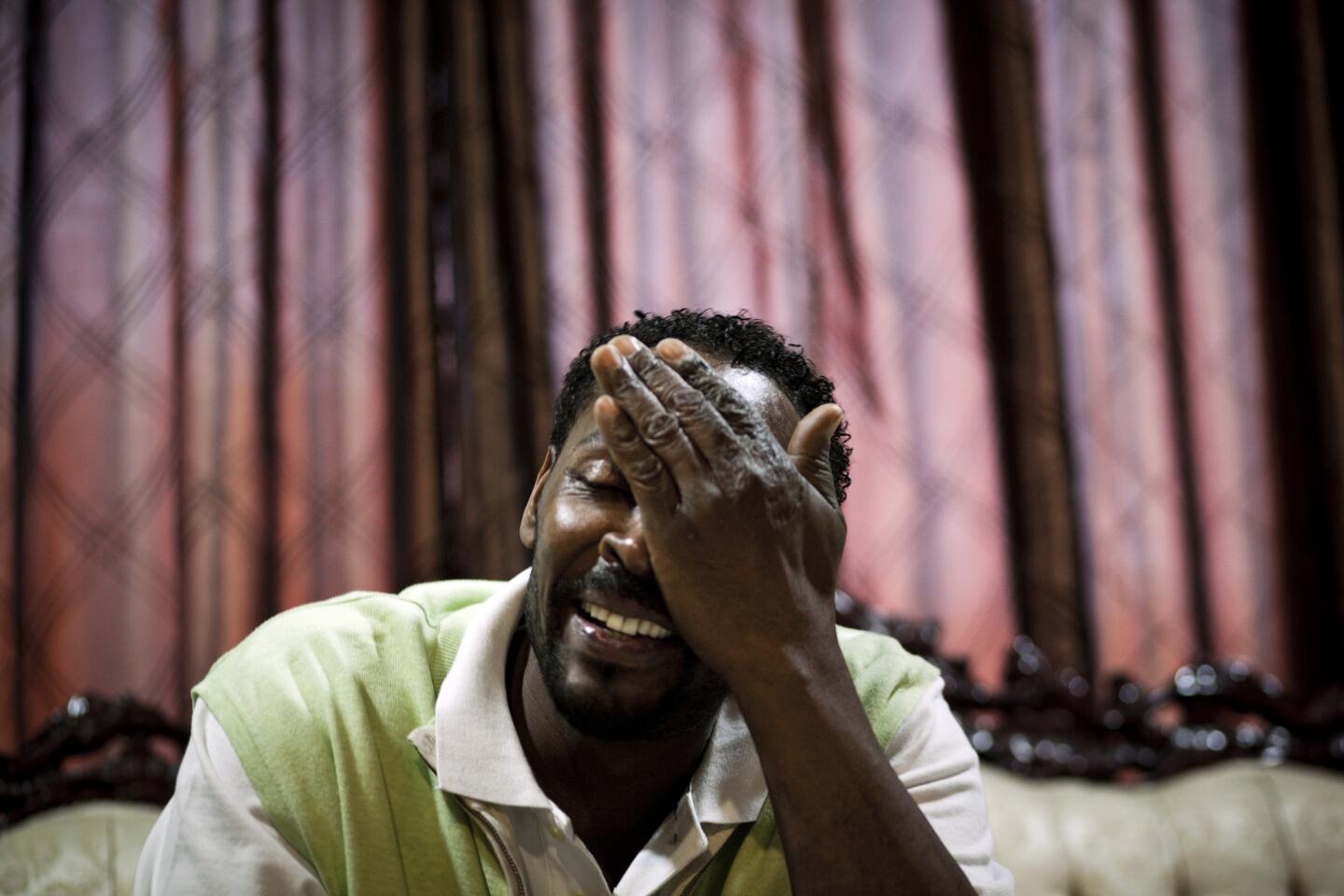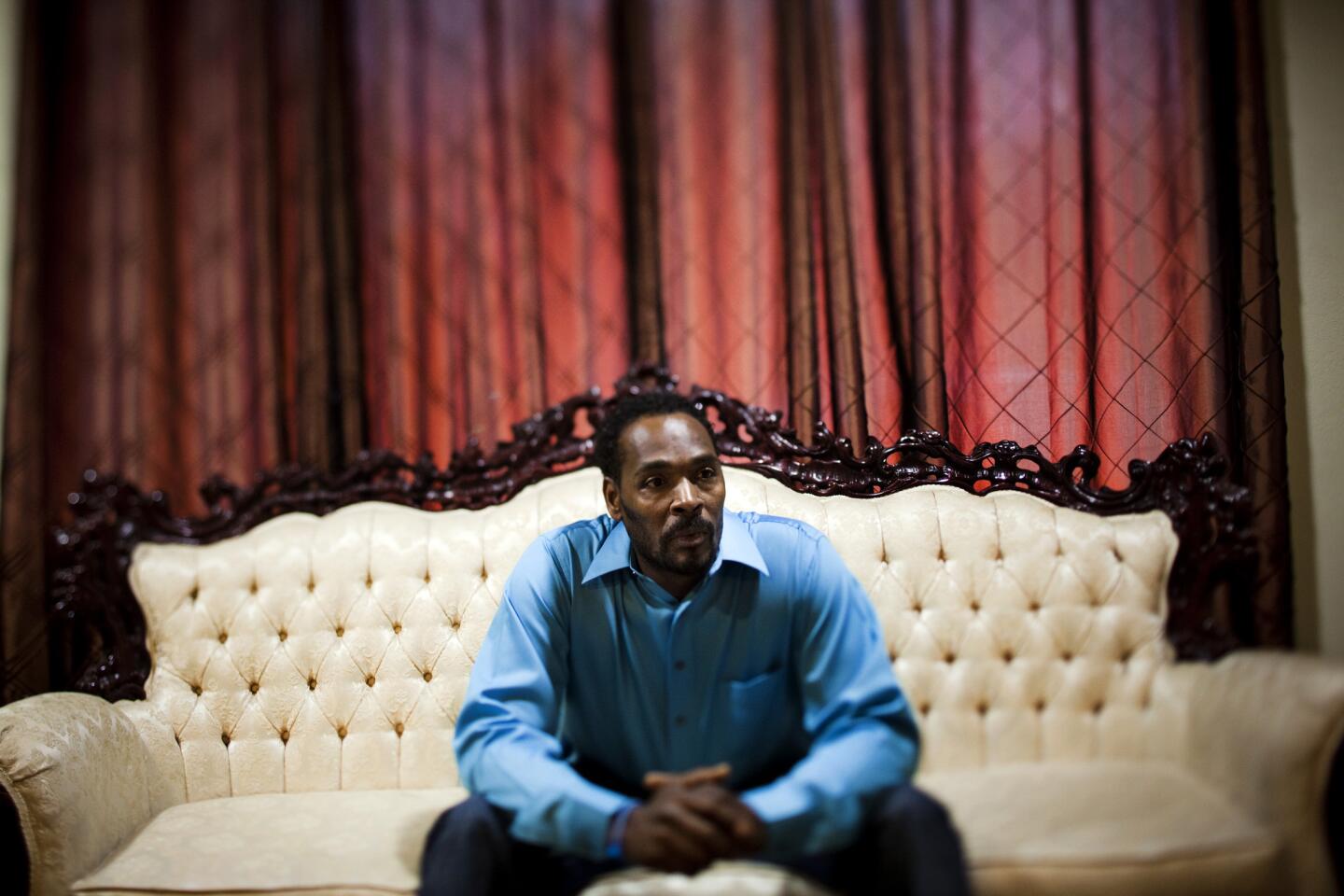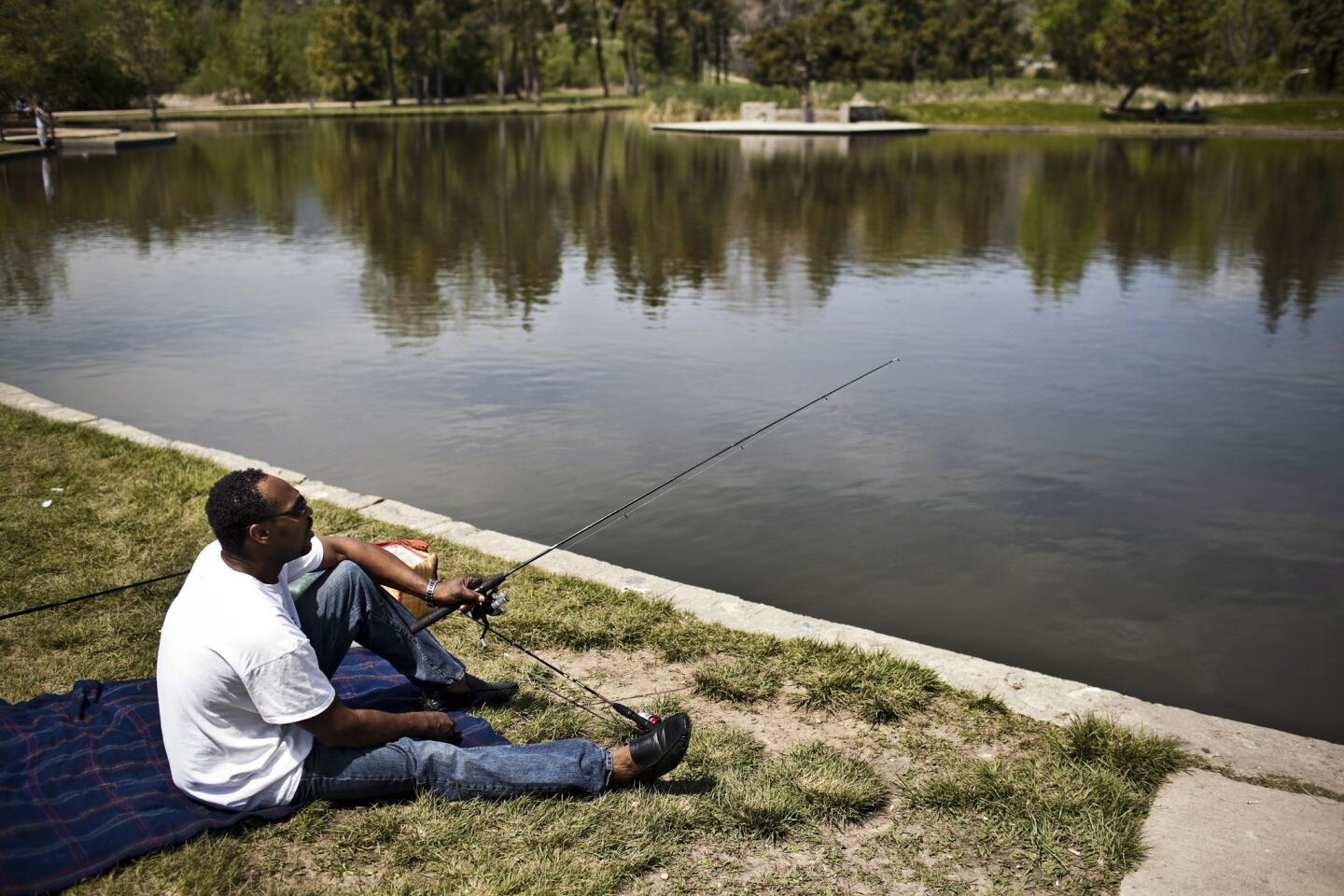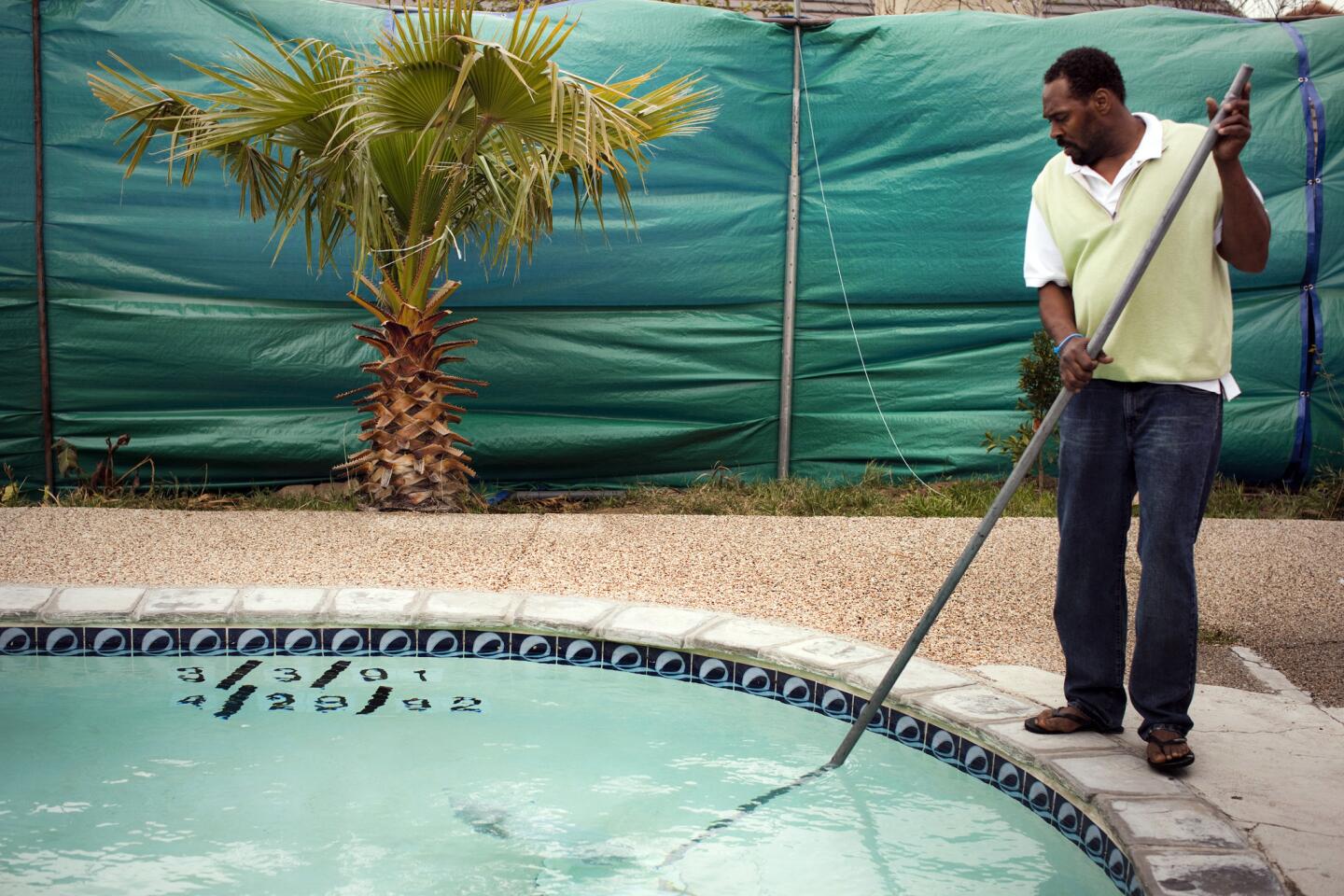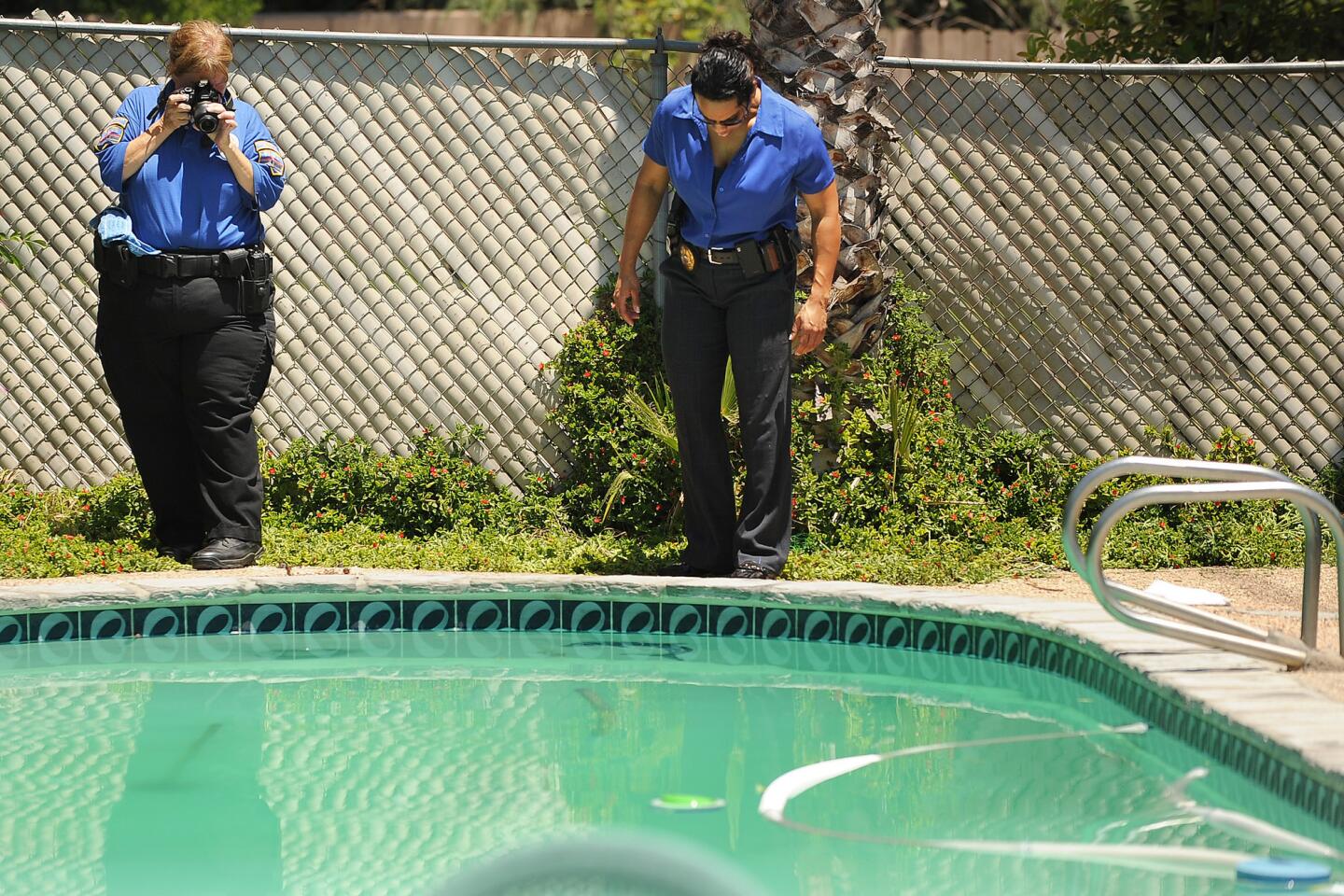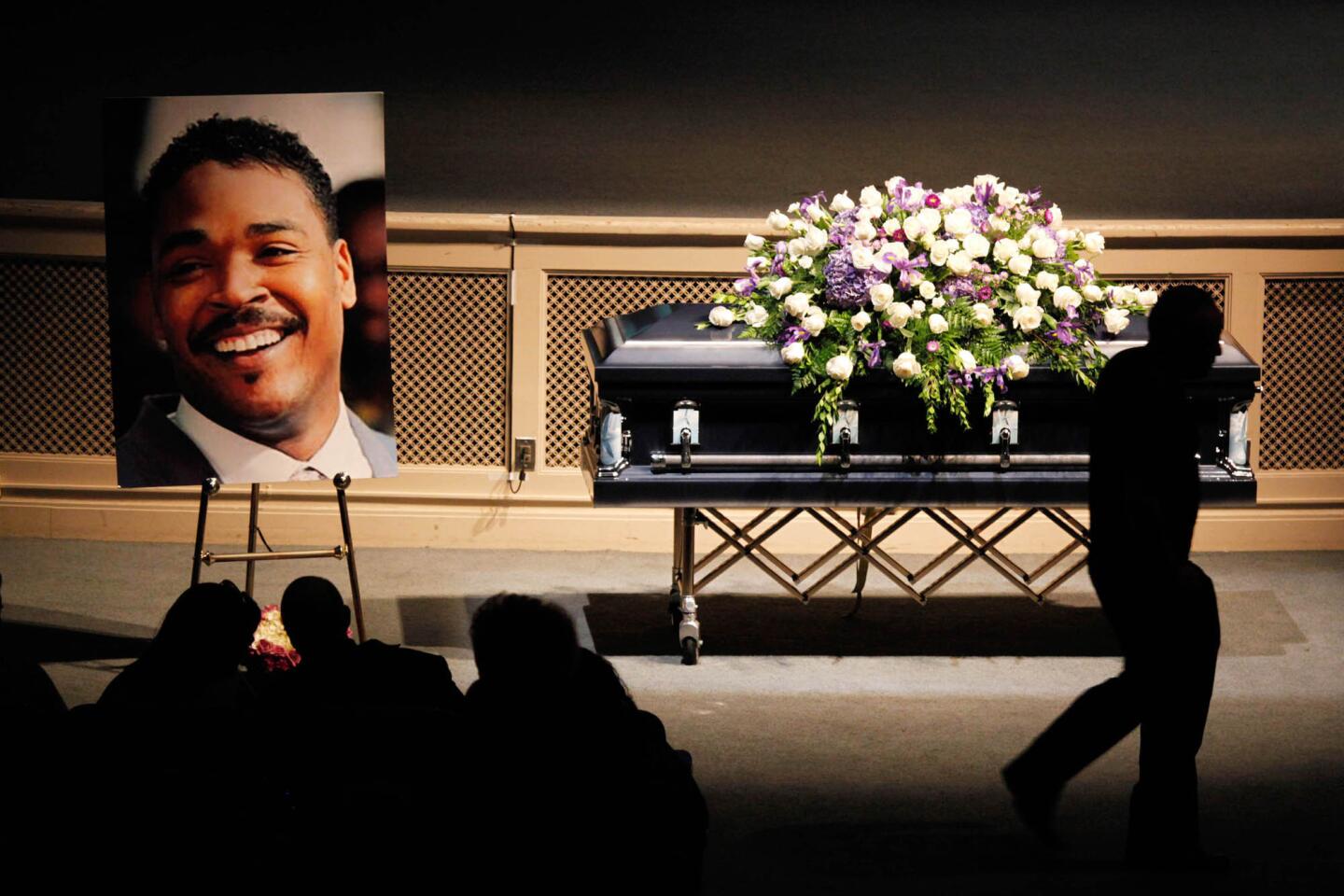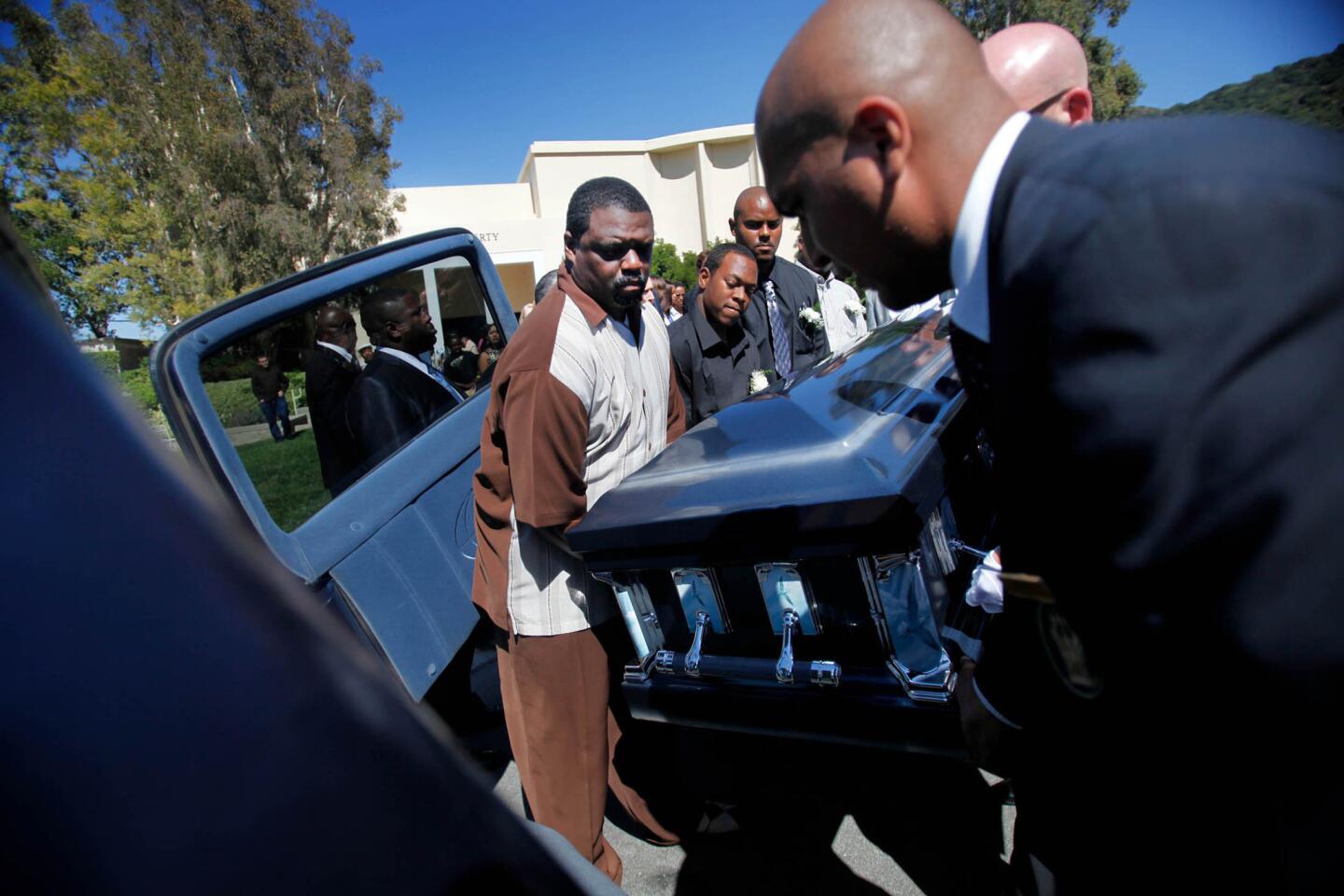City returns to work, school
- Share via
With their street corners still guarded by rifle-toting soldiers and their nerves less jittery but still frayed, Los Angeles residents went back to work and school Monday as officials grappled with how to rebuild the city--both physically and emotionally--in the wake of last week’s riots.
Freeways, buses and trains were once again crowded. Most classrooms were full, although school officials reported slightly higher than normal absentee rates. Suit-clad men and well-dressed women returned to the streets of downtown. Shoppers went back to the malls.
Despite the trauma that Los Angeles has experienced since the riots began last Wednesday, the day appeared to go smoothly. But in neighborhoods across the city, as people attempted to go about their daily routines, they experienced changes subtle and profound. At every turn, there were constant, sometimes painful, reminders of the devastation.
As one resident, spotting a snub-nosed Army helicopter flying over the Federal Building in Westwood, put it: “Every time you think you are getting back to normal, you see something that reminds you that it isn’t quite yet.”
In major developments Monday:
* President Bush said the federal government will make available $600 million in loans and cash grants to help repair damage. At the same time, the White House blamed “liberal programs of the ‘60s and ‘70s” for the upheaval, triggered by last Wednesday’s not guilty verdicts in the Rodney G. King police beating case. The President’s spokesman, Marlin Fitzwater, said that programs offering “direct handouts” do not encourage people to improve their lives by owning property and developing a stake in their community.
* Bush’s likely Democratic opponent, Arkansas Gov. Bill Clinton, toured arson-stricken Koreatown and South Los Angeles and met with a variety of government, civic and religious leaders. “I am convinced if we can heal the wounds of racial division in this community, then we can do it anywhere,” Clinton told a group of Latino activists.
* Mayor Tom Bradley stuck by his decision to lift the dusk-to-dawn curfew, despite an incident Sunday night in which a National Guardsman shot and killed a motorist. Long Beach officials extended their curfew for another night and are expected to reconvene today to decide whether to remove it.
* In a bid to generate business support for an effort to rebuild the inner city, Gov. Pete Wilson met privately with 16 California corporate executives--including representatives of four major financial institutions and three large supermarket chains. And because of the rioting, Wilson extended the deadline for Los Angeles County residents to register for the June 2 primary. The new deadline is 5 p.m. Friday.
* Federal law enforcement experts dispatched to Los Angeles by Bush were sent home Monday, as were police officers and sheriff’s deputies from some Southern California areas. But the National Guard, Army and Marine troops remained. Although their status is to be re-evaluated Wednesday, Bradley said: “There is no plan, no desire to withdraw them.”
* The coroner’s office placed the death toll at 58 , although local police agencies disputed whether three of them are riot-related. Injuries have climbed to 2,383--228 of them critical. The population of Los Angeles County jails continued to swell as the arrest tally rose to 12,111. Property damage has been estimated at $717 million.
* Prompted by tips from neighbors and shopkeepers, teams of police officers searched scores of apartments in Hollywood and other communities and retrieved truckload after truckload of stolen merchandise--furniture with protective cardboard still on it, microwaves with price tags inside and children’s shoes with anti-shoplifting devices still attached. Many residents, seeing the squads of officers, readily handed over their newly gotten stereos or sofas, or explained, “I found it in the street.”
* Los Angeles city finances, already reeling from the recession, took another blow in the rioting. Officials estimated that damage to city-owned property totaled at least $15 million, mostly in burned electrical transformers, power lines and utility poles. The city must also pay nearly $13 million for police and firefighting efforts, mostly in overtime pay. Councilman Zev Yaroslavsky, who heads the council’s Budget and Finance Committee, said: “I feel like I’m the captain of a sinking ship right now.”
* There were long lines at state employment offices, as economists estimated that at least 20,000 people were put out of work when their places of business were looted or burned down. Said one newly unemployed man, dazed and fighting tears as he waited in an unemployment line: “Let’s put it this way. I’m too rich to be on welfare and I’m too poor to take care of my family.”
* Most schools across Los Angeles reopened for the first time since Thursday amid stepped-up security. Teams of counselors helped students sort through mixed emotions as morning classes--from drama to Spanish--delved into every conceivable aspect of the rioting. School officials reported no unusual discipline problems. “The energy level is low,” one teacher explained. “They are tired.”
Back to the Grind
Los Angeles greeted the workweek with a brave face. For the most part, parents went back to their jobs and sent their children back to class.
Airport officials said operations resumed as usual. The California Highway Patrol said traffic was normal and the Southern California Rapid Transit District said bus service had been completely restored, although there were occasional delays in South Los Angeles because of military vehicles and gawkers.
But behind this seeming return to calm, there was a sense that the fabric binding the city together had been slashed and that the tattered edges were being hastily glued together. Suddenly, the routines that usually start up on a Monday--going to work or school--were no longer routine at all.
In Gardena, 29-year-old Gary Adelstein, whose family owns a company that manufactures shower curtains, returned to work to find his business intact. But at least eight of his customers had lost their businesses to arsonists, leaving Adelstein wondering what he would do with the orders he expected to ship out.
Even more troubling, he said, were the new feelings he was experiencing about traveling to visit his clients in the inner city.
“I’m so comfortable on those streets, getting out of the car and going wherever,” he said. “It took me a while to get used to that. Now, I wonder: Is it safe to go out there and go in these stores?”
At Dorsey High School in South Los Angeles, students returned to find the National Guard roaming the perimeter of their campus. A steady stream of civic leaders, including the Rev. Jesse Jackson, paraded through the school, where the gymnasium has been converted into a makeshift shelter for victims of the riots.
After an assembly, students dashed to classes, lined up at snack stands and loitered around campus grounds in small groups, much as usual. But their conversation was focused on one topic: the dramatic events of last week.
“I live in South-Central and the corner around my house is all burned out,” said Kendra Trotter, 17, a junior. “I don’t think it made a lot of sense. At one store a man came out and opened the doors and told them they could take everything but they still burned it down. Now we have to stand in line for three hours or go out to places like Simi Valley or the Westside just to shop.”
In the city’s Pico-Union district, sidewalks teemed with morning shoppers and nearby residents who for the first time were witnessing the extent of the neighborhood devastation.
Women pushing strollers negotiated around piles of rubble; a crowd of about 50 lined up an hour early for the opening of a Security Pacific Bank. In a neighborhood that has become a refuge for thousands of Central Americans fleeing their own war-torn countries, the sight of smoldering shells of buildings jolted their confidence in their adopted America.
Many stepped off buses confused and nearly speechless to find that the bank, the market, the check-cashing shop were gone.
“People are trying to go about doing their normal business and act like they are calm,” said Eduardo Vega, 26, who moved to Los Angeles from Mexico City 12 years ago. “But everyone is nervous. The violence can come back at any moment.”
On the Metro Rail Blue Line, which passes through the heart of the riot-torn area, ridership was heavy on Monday but there was a noticeable reduction in the number of white and white-collar passengers.
A white woman from North Long Beach who rode the train to downtown Los Angeles, where she works, said she thought twice before boarding. But she said she felt the disturbances had sufficiently quieted.
“Sure, I had some second thoughts,” said the young woman, who declined to give her name. “Because of where it goes, you think twice. People I normally ride with would not get on it today. I think some people saw that videotape of that guy getting pulled out of his truck and beaten, and I think people had concerns. But on the train itself, it was safe. I felt very safe.”
Similarly, those who arrived in downtown Los Angeles on the 9:01 a.m. Amtrak commuter train from Orange County said there were fewer passengers than usual. It was easy to find spaces in the normally jammed parking lot.
Attorney Scott Hoyt, a Yorba Linda resident, was on the train. Although he was coming back to work, he said he had no plans to leave his office during the day.
“Just as well,” he explained. “Who knows if this thing might pop up again?”
Plans for Action:
As residents attempted to go about their daily routines, government officials and business leaders began formulating a plan to rebuild the city’s riot-scarred neighborhoods.
President Bush dispatched a team of officials to the city to assess its needs and announced $600 million in federal aid--half in loans from the Small Business Administration and half in grants from Federal Emergency Management Agency. Bush is scheduled to visit Los Angeles Thursday and plans to conduct an inspection of the riot damage then.
In Sacramento, Gov. Wilson said representatives for four major financial institutions--Bank of America, Wells Fargo, First Interstate and Home Savings--have agreed to to provide financing for economic development in distressed areas. Wilson also said three major food retailers--including the owners of the Vons, Ralphs and Food 4 Less chains--plan to repair and reopen any supermarkets damaged during last week’s disturbances.
Bank of America separately announced it would invest up to $25 million to help get small businesses back in operation. The American Savings Bank in Irvine announced it would donate $1 million to rebuild the worst-hit sections of the city. And Glendale Federal Bank is committing $50 million in mortgage loans for homeowners and apartment building owners rebuild.
Meanwhile, Assemblyman Art Torres (D-Los Angeles) proposed a 1/4-cent sales tax increase to help fund the rebuilding effort and also to generate funds for earthquake relief. The proposed 12-month statewide sales tax would raise $700 million to $800 million to rebuild Los Angeles and other devastated cities, Torres said.
Calling upon the state Legislature to hold a special session to consider a plan for rebuilding the inner city, Torres said: “The Legislature must set a standard for others to follow by acting immediately to rebuild and reinvest in our urban centers.”
Some local groups offered incentives for victimized merchants to remain in South Los Angeles or other areas hard-hit by the rioting. The United Health Plan, a health maintenance organization affiliated with the Watts Health Foundation, will notify its 82,000 subscribers this week that premiums on employees’ health insurance will be deferred for six months if their businesses were disrupted by arson or looting.
In addition, two ministers and the owner of several fast food franchises announced plans to turn a former technical school across from the Sports Arena on Martin Luther King Jr. Boulevard into a temporary, mega-supermarket where scores of victimized merchants could sell their wares as they rebuild, and where residents whose local markets were destroyed could shop.
Vending stalls for the merchants would be offered free of charge in the former National Technical Schools, which has 80,000 square feet of space available.
Just as those plans for action were announced, however, federal and local officials continued bickering over who was to blame for last week’s mayhem and how it was handled.
In Los Angeles, Mayor Tom Bradley continued to question the Police Department’s slow response to the violence and why, on the night the riots broke out, outgoing Police Chief Daryl F. Gates attended a Brentwood fund-raiser to defeat Proposition F, the June 2 police reform ballot measure.
A spokesman for Bradley said the mayor also thought that Gates’ “personal ego” had stopped him from calling for federal troops sooner. The mayor has asked the Police Commission to conduct an inquiry into the department’s entire response to the disaster, spokesman Bill Chandler said.
In addition, Bradley on Monday disclosed that, because of high tensions between himself and the chief, he had not spoken directly with Gates in the 13 months preceding the first night of last week’s riots. Instead, Bradley said he communicated with the department through the Police Commission and deputy chiefs.
The Troops
Federal law enforcement experts sent to Los Angeles by President Bush were sent home Monday, as were police officers and sheriff’s deputies from some Southern California areas.
But even as they left, active U.S. Army troops hit the streets of Los Angeles for the first time, moving out from the staging area in El Monte where they had been sent the day before to await instructions.
As the Army units fanned out, they replaced weary National Guard troops in some areas. The Guard added a mobile patrol to their contingent, and were preparing to respond to emergencies in areas where the LAPD requested support. Those units went on call as sunset approached and the curfew was lifted.
There were few incidents Monday, but tensions remained high as everyday street crimes jangled the nerves of military and civilian authorities guarding against new outbreaks of rioting.
The FBI, for instance, was so concerned about rumors that it is dropping its civil rights probe of the King beating that it issued a press statement. The investigation, the statement stressed, “has been given the highest priority.”
On the streets, there were several unconfirmed reports of sniper attacks on Monday. In one incident near Koreatown, police barricaded a four-block area at Normandie Avenue and 3rd Street after an auto theft suspect, armed with a shotgun, blew out the back window of a car driven by a young Korean woman, who was uninjured. He then holed up in an underground parking garage, firing one errant shot at police. The man was arrested.
Police did not link the incident to the riot, although it did cause major traffic jams throughout the Koreatown area, as anxiety-ridden residents crowded around police lines.
Tensions were ratcheted up another notch by a shooting from Sunday night, in which a National Guard contingent shot and killed a man who allegedly ran one of their barricades and made several attempts to run over the Guard members with his Datsun 280Z. The shooting marked the first time a citizen had been struck by military gunfire since the troops arrived Thursday.
The LAPD and military authorities both launched investigations, but officials said that the preliminary inquiries indicated that the Guardsmen acted within their authority. According to military rules of engagement, Guard members have the right to kill a person who threatens their lives or the lives of others.
Despite that shooting, Bradley lifted the curfew as promised, and said that military troops would remain in the city to guard against new violence.
“Those troops are here until we ask them to leave,” Bradley said at a morning news conference. “You can be sure we’re going to be very careful about when there’s a de-escalation in the troop assignment.”
Officials close to the mayor said they expect the troops to remain in the city at least through Wednesday. Military experts predicted that the Army and Marine units would probably be the first to leave the city, and that Guard units would probably stay longer because they have the most training in fighting civil disturbances.
Anxieties Persist
For many residents, there were lingering fears.
Although the curfew had been lifted, some normally bustling areas of the city were unusually quiet. Along Hollywood Boulevard, which had been hit hard by arsonists and looters, movie theaters remained empty and foot traffic was light--signs that people were still nervous.
On trendy Melrose Avenue, most shops closed early and some were still boarded up. Restaurants, one of the street’s main evening attractions, were having trouble filling their tables.
Kezia Schulhof, 29, a secretary out eating ice cream with her boyfriend, said she welcomed the lifting of the curfew. But the lifeless atmosphere on the street troubled her. “It seems like a spirit has been broken,” she said. “There’s a real quietness.”
In the daytime, nerves were jangled as well. When police barricaded her Koreatown neighborhood in search of the shotgun-wielding suspect, Mary Kunitake, 79, took cover near her balcony and trembled from the thunderous sounds of helicopters overhead. For the Japanese-American woman, the chaotic scenes of fires, looting, sirens and soldiers, and now a barricade, yanked her memory back to her life in Japan during World War II.
“Every time I hear the helicopters I think of the B-29s. I am reliving the war years,” she said. “The world is upside-down. I don’t think I will ever feel safe again.”
At the home of Roy and Laverne Walker, who live just blocks from the South Los Angeles intersection where the rioting started last week, the phones worked again and electricity had finally been restored. Their gardener showed up, as did the mailman.
But the black, middle-class couple remained deeply troubled. Roy, a state police officer, and Laverne said they were seriously thinking of moving to the suburbs--to outposts as far away as the Antelope Valley and even Simi Valley, an area known to be relatively crime-free. It is also where a jury with no black members returned the not guilty verdicts against the police officers accused of assaulting Rodney G. King.
“There’s a sense of violation,” Laverne Walker said of her neighborhood, as she tended their 21-month-old child, Saida. “All of a sudden the people in the neighborhood seem like strangers. They’re people I’ve never seen before.”
At Union Station, Liliana Cabrera of Mission Viejo had just arrived on the morning train and was waiting for a shuttle bus to take her to work. Constantly looking around and startled by sirens, Cabrera was clearly edgy.
“Of course, I’m nervous. I didn’t know how it would be,” said Cabrera, who has not been in the city since Thursday. “I’m real worried about snipers--I read about them in the paper and you never know when one could pop up.”
At the same time, in many corners of the city there was a growing sense that with the large military presence, Los Angeles was for the first time in years safe from the gangbangers and other criminals.
“I welcome those soldiers,” said Jim Weber, a real estate agent in the hard-hit West Adams area. “Right now, with the Guard all around and the Marines and the police and the Highway Patrol, they should have this many people in the city all the time. Why should this crime be considered OK?”
For many, one of the most enduring and frightening images of the riots was the videotaped assault on Reginald O. Denny, 36, the white truck driver who was rescued by four black Good Samaritans. On Monday, his hospital social worker told him for the first time about the enormity of the rioting and how he has become a symbol of the racial violence.
Denny suffered severe head injuries in the beating and was unable to talk until Monday afternoon. Prior to that, he communicated to social worker Cecily Kahn through notes.
“I’m just a regular guy,” Denny wrote in one. “I was just doing my job. I’ve gone down that street a thousand times. I work. I go home. I don’t want to be famous.”
The Toll
As of 9:30 p.m. Monday, authorities reported the following: * Deaths: 58
* Injuries: 2,383, including 228 critical. Among the injured are 10 firefighters and 71 law enforcement officers.
* Fires: More than 7,000 responses.
* Arrests: 12,111
* Damage estimate: $717 million, excluding Long Beach; 5,273 buildings damaged or destroyed, including at least 1,600 severely damaged or burned businesses; 3,100 businesses affected by rioting or looting.
More to Read
Sign up for Essential California
The most important California stories and recommendations in your inbox every morning.
You may occasionally receive promotional content from the Los Angeles Times.
